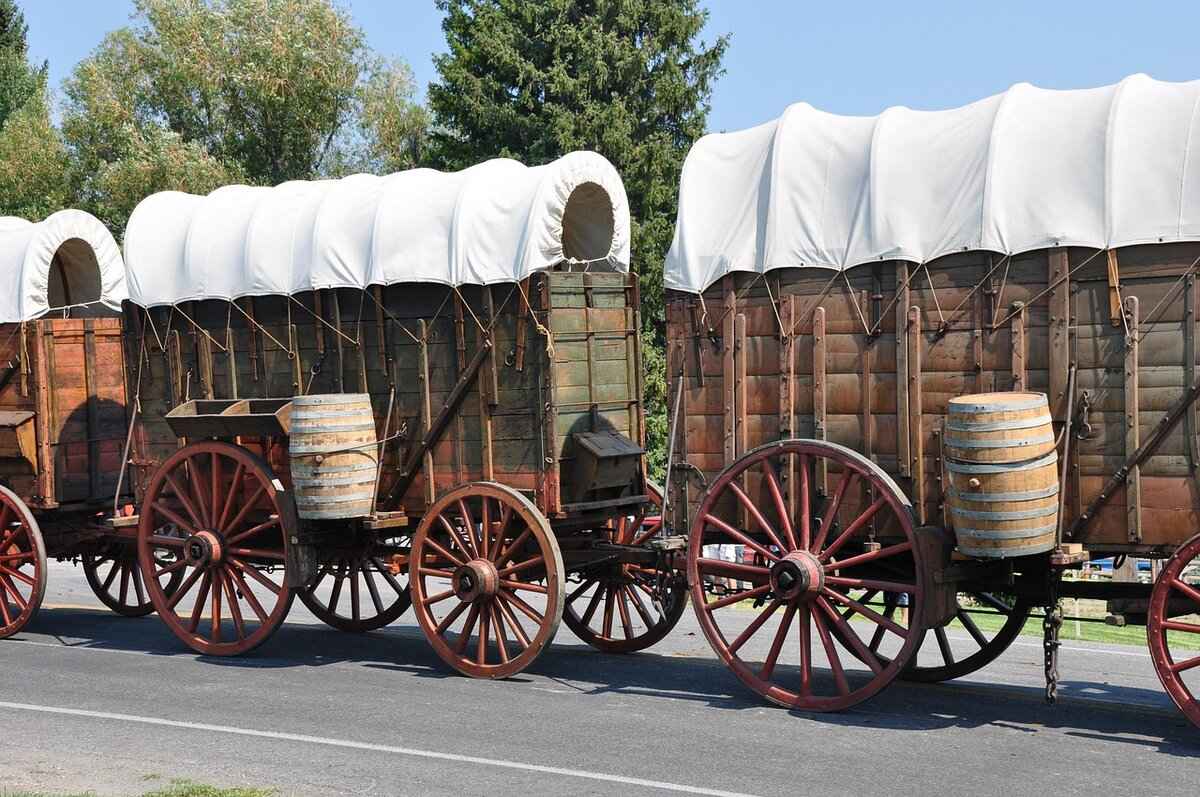This article delves into the significant role of West Bengal during India’s struggle for independence, emphasizing the key figures, movements, and events that shaped the region’s contribution to the freedom movement.
The Early Nationalist Movement in Bengal
West Bengal emerged as a cradle of nationalism in the late 19th century, with intellectuals and leaders advocating for self-governance and reforms. This early nationalist sentiment laid the groundwork for future independence efforts, inspiring generations to fight against colonial rule.
Key Figures in Bengal’s Independence Movement
- Rabindranath Tagore: A celebrated poet whose works inspired unity and nationalism.
- Subhas Chandra Bose: A charismatic leader advocating for complete independence.
Rabindranath Tagore’s Influence
Tagore’s literary contributions were pivotal in fostering a sense of nationalism. His poems and songs resonated with the masses, encouraging them to engage in the fight for freedom. His support for the Swadeshi Movement emphasized self-reliance and the promotion of indigenous products.
The Role of the Swadeshi Movement
Initiated in Bengal, the Swadeshi Movement aimed to boycott British goods and promote local industries. This movement marked a significant turning point in the struggle for independence, successfully mobilizing a large section of the population.
Women’s Participation in the Independence Movement
Women played a crucial role in the independence movement, challenging traditional gender roles and actively participating in protests. Leaders like Sarala Devi Chaudhurani emerged, advocating for women’s rights and their involvement in the broader struggle.
The Impact of the Bengal Partition
The partition of Bengal in 1905 acted as a catalyst for nationalist sentiments, uniting people against British policies and leading to widespread protests. This event showcased the power of collective action in the fight for freedom.
Conclusion: West Bengal’s Legacy in India’s Freedom Struggle
West Bengal’s contributions to India’s independence movement are profound, with cultural, political, and social dimensions that continue to inspire future generations in the quest for justice and equality.

The Early Nationalist Movement in Bengal
Bengal played a pivotal role in the emergence of early nationalist sentiments in India, particularly during the late 19th century. This period was marked by a surge of intellectual and political activity, as numerous leaders and thinkers began advocating for self-governance and significant reforms. The cultural and political awakening in Bengal laid the groundwork for the broader independence efforts that would follow in the 20th century.
At the heart of this movement were various intellectuals and reformers who sought to challenge the status quo. They emphasized the importance of national identity and self-determination, which resonated deeply with the populace. The formation of organizations such as the Indian National Congress in 1885 provided a structured platform for these sentiments to flourish.
Key figures emerged during this time, including the likes of Bankim Chandra Chatterjee, whose literary works inspired a sense of pride and unity among Indians. His famous song, “Vande Mataram,” became an anthem for the nationalist movement, symbolizing the call for freedom and self-rule.
The late 19th century also saw the rise of the Swadeshi Movement, which encouraged the boycott of British goods and the promotion of indigenous products. This initiative not only aimed at economic self-sufficiency but also served as a rallying point for the masses, uniting them in a shared cause against colonial oppression.
Moreover, the impact of socio-religious reform movements, such as the Brahmo Samaj and the Arya Samaj, cannot be overlooked. These organizations played a crucial role in awakening the social consciousness of the people, advocating for reforms that challenged colonial rule and traditional practices.
In conclusion, the early nationalist movement in Bengal was characterized by a vibrant interplay of cultural, intellectual, and political forces. This period set the stage for the more organized and widespread efforts that would ultimately lead to India’s independence, showcasing Bengal’s indelible contribution to the freedom struggle.

Key Figures in Bengal’s Independence Movement
The struggle for India’s independence was marked by the contributions of numerous influential personalities from Bengal. These individuals played a crucial role in shaping public opinion and mobilizing the masses, ultimately inspiring a collective movement against colonial rule.
- Rabindranath Tagore: A Nobel laureate in literature, Tagore’s profound poetry and songs instilled a sense of nationalism and cultural pride among the people. His literary works often reflected themes of resistance and unity, encouraging individuals to engage in the fight for freedom.
- Subhas Chandra Bose: An iconic leader, Bose was a fervent advocate for complete independence from British rule. His charismatic leadership and strategic approach galvanized support from various sections of society, both in India and among the Indian diaspora abroad.
- Chittaranjan Das: A prominent lawyer and politician, Das was instrumental in mobilizing the youth of Bengal. His emphasis on self-rule and civil disobedience inspired many to join the freedom struggle.
- Deshbandhu Chittaranjan Das: Known as Deshbandhu (Friend of the Nation), he played a pivotal role in the Non-Cooperation Movement, urging people to boycott British goods and institutions.
- Sarojini Naidu: A key figure in the Indian National Congress, Naidu was not only a poet but also a passionate advocate for women’s rights and participation in the independence movement.
These leaders, among others, collectively fostered a spirit of resistance and unity in Bengal, contributing significantly to the broader Indian independence movement. Their legacies continue to inspire future generations in the ongoing quest for justice and equality.
Conclusion: The contributions of these prominent personalities from Bengal were instrumental in shaping the course of India’s struggle for independence. Their efforts not only mobilized the masses but also laid the foundation for a united front against colonial oppression, leaving an indelible mark on the nation’s history.
Rabindranath Tagore’s Influence
Rabindranath Tagore, a luminary of Indian literature and philosophy, played an instrumental role in shaping the cultural landscape of Bengal and, by extension, India during the struggle for independence. His multifaceted contributions as a poet, playwright, and musician not only inspired a sense of nationalism but also fostered a profound unity among the people of Bengal, igniting a cultural renaissance that became a catalyst for the independence movement.
Tagore’s literary prowess was marked by a deep understanding of the socio-political context of his time. His poems and songs often encapsulated themes of freedom, resistance, and cultural pride, which resonated with the masses. Through his works, he encouraged individuals to embrace their identity and strive for a collective future free from colonial oppression. His famous composition, “Jana Gana Mana,” not only became the national anthem but also symbolized the aspirations of a nation yearning for self-determination.
Moreover, Tagore’s involvement in the Swadeshi Movement highlighted his commitment to economic independence. He advocated for self-reliance and the promotion of indigenous products, urging his fellow countrymen to reject British goods. This call for cultural and economic nationalism was pivotal, as it aligned the fight for freedom with a resurgence of local industries and crafts.
Tagore also engaged with the youth, inspiring them to take an active role in the freedom struggle. His educational initiatives, such as the establishment of Visva-Bharati University, aimed to cultivate a sense of global citizenship while nurturing a strong national identity. This holistic approach to education emphasized the importance of cultural heritage and the arts in fostering a robust national spirit.
In conclusion, Rabindranath Tagore’s influence transcended mere literary contributions; he became a beacon of hope and a source of inspiration for countless individuals striving for independence. His legacy continues to inspire future generations, reminding us of the power of art and culture in the quest for freedom.
Literary Contributions to Nationalism
Rabindranath Tagore, a towering figure in Indian literature, utilized his profound literary talents to ignite a sense of nationalism among the people of Bengal and beyond. His works, rich with themes of patriotism and cultural identity, served as a powerful tool in the fight against British colonial rule.
Tagore’s poetry and songs often conveyed messages of resistance and hope, encouraging individuals to engage actively in the struggle for freedom. His famous song, “Jana Gana Mana,” became an anthem that not only celebrated the diversity of India but also called for unity in the face of oppression. Through his verses, Tagore instilled a sense of pride in the nation’s cultural heritage, reminding people of their roots and the importance of self-identity.
Moreover, Tagore’s literary contributions extended beyond poetry. His prose works, such as “Ghare-Baire” (The Home and the World), explored the complexities of nationalism and the dichotomy between tradition and modernity. This narrative encouraged readers to reflect on their roles in shaping the future of their nation, emphasizing the need for civic responsibility in the fight for independence.
In addition to inspiring individuals, Tagore’s works fostered a cultural renaissance that united people across various strata of society. His emphasis on self-reliance and the promotion of indigenous products during the Swadeshi Movement highlighted the connection between cultural pride and economic independence. Tagore’s call to action resonated with many, urging them to support local artisans and industries, thereby strengthening the movement against colonial rule.
In summary, Rabindranath Tagore’s literary contributions were instrumental in shaping the narrative of nationalism in India. His ability to weave themes of patriotism, cultural identity, and resistance into his works not only inspired a generation but also laid the foundation for a unified struggle towards independence.
Tagore and the Swadeshi Movement
Rabindranath Tagore, a luminary in the realm of literature and philosophy, made significant contributions to the Swadeshi Movement, which aimed to promote self-reliance and economic independence for India during the struggle against British colonial rule. His advocacy for the use of indigenous products was not merely a call for economic change but also a profound assertion of cultural pride and identity.
The Swadeshi Movement emerged in the early 20th century as a response to British policies that undermined local industries. Tagore recognized that the movement was essential not only for economic reasons but also for fostering a sense of national unity. By encouraging the consumption of local goods, he believed that the people could reclaim their dignity and self-worth, which had been eroded by colonial exploitation.
Tagore’s poetry and songs often celebrated the beauty of Indian craftsmanship and the spirit of self-sufficiency. His famous song, “Amar Sonar Bangla,” became an anthem for many who participated in the movement, inspiring a sense of belonging and collective purpose. Through his artistic expression, Tagore instilled a sense of hope and determination in the hearts of many Indians, urging them to take pride in their heritage and support local artisans and industries.
Moreover, Tagore’s involvement in the Swadeshi Movement was not limited to mere words. He actively participated in various initiatives aimed at promoting local products and boycotting British goods. His emphasis on education and cultural revival also played a crucial role in shaping the movement, as he believed that a well-informed populace was essential for achieving true independence.
In conclusion, Tagore’s support for the Swadeshi Movement was a vital aspect of his legacy, intertwining cultural pride with the quest for economic independence. His contributions continue to resonate today, reminding us of the importance of self-reliance and the promotion of indigenous products in fostering a strong national identity.
Subhas Chandra Bose’s Leadership
Subhas Chandra Bose stands as one of the most influential leaders in India’s struggle for independence, renowned for his dynamic approach and unwavering commitment to the cause. His vision for a free India was marked by a blend of political acumen and military strategy, which galvanized support from diverse sections of society, both within India and on the global stage.
Bose’s leadership was characterized by his ability to mobilize the masses. He understood the importance of uniting different factions of the Indian populace, appealing to their aspirations for freedom. His charismatic personality and compelling oratory inspired countless individuals to join the independence movement. Bose believed that complete independence could only be achieved through direct action, often advocating for a more aggressive stance against British rule.
One of Bose’s significant contributions was his role in founding the Forward Bloc, a political party aimed at consolidating the anti-colonial forces. He sought to bring together various nationalist groups, transcending regional and ideological divides. This move not only strengthened the independence movement but also emphasized the need for a cohesive strategy to challenge colonial authority.
Furthermore, Bose’s international outreach was pivotal. He sought support from countries like Germany and Japan during World War II, forming the Indian National Army (INA) to fight against British forces. His belief in military action as a means to achieve freedom was controversial, yet it resonated with many who were frustrated by the slow pace of political negotiations.
Despite facing immense challenges, including opposition from within the Indian National Congress, Bose’s legacy remains influential. His call for self-reliance and national unity continues to inspire generations, making him a revered figure in India’s history. Bose’s leadership exemplifies the spirit of resistance and the quest for independence, reminding us of the sacrifices made in the pursuit of freedom.
In conclusion, Subhas Chandra Bose’s dynamic leadership and unwavering commitment to complete independence played a crucial role in shaping the Indian independence movement. His strategies, both political and military, left an indelible mark on the struggle for freedom, making him a pivotal figure in India’s history.

The Role of the Swadeshi Movement
The Swadeshi Movement, which originated in Bengal during the early 20th century, represented a profound shift in the Indian independence struggle. This movement sought to challenge British colonial rule by promoting indigenous products and boycotting foreign goods. It became a rallying point for nationalistic sentiments, marking a crucial chapter in India’s fight for freedom.
One of the primary objectives of the Swadeshi Movement was to revive local industries and foster economic self-sufficiency. By encouraging the public to reject British goods, the movement aimed to weaken the economic grip of colonial powers and empower local artisans and manufacturers. This economic boycott not only aimed to boost local economies but also instilled a sense of pride in Indian craftsmanship and products.
The movement catalyzed mass mobilization across various sections of society. Protests, rallies, and public meetings became common as people from different backgrounds united against colonial exploitation. This collective action was pivotal in creating a national identity among Indians, transcending regional and cultural divides. The Swadeshi Movement also inspired a wave of cultural revival, with artists, writers, and thinkers contributing to a burgeoning sense of nationalism.
Furthermore, the Swadeshi Movement paved the way for future political activism. It laid the groundwork for subsequent movements, such as the Non-Cooperation Movement and the Civil Disobedience Movement, by demonstrating the power of organized resistance against oppression. The emphasis on self-reliance and local production resonated deeply, influencing generations of leaders and activists in the quest for independence.
In conclusion, the Swadeshi Movement was not merely an economic initiative; it was a significant turning point in the Indian independence struggle. By fostering a spirit of unity and resilience, it played an essential role in shaping the course of India’s fight for freedom, leaving a lasting legacy that continues to inspire movements for self-determination and justice today.
Economic Boycotts and Local Industries
The Swadeshi Movement in Bengal marked a pivotal moment in India’s struggle for independence, with a focus on economic boycotts aimed at undermining British colonial control. By advocating for the boycott of British products, the movement sought to revive local industries and promote economic self-sufficiency, thereby weakening colonial economic control.
During this period, the call for boycotting British goods resonated deeply with the populace. It was not merely a political statement; it was a rallying cry for self-reliance and national pride. The Swadeshi Movement encouraged individuals to support local artisans and manufacturers, fostering a sense of community and shared purpose. This grassroots effort aimed to build a robust local economy that could stand in contrast to the dominance of British imports.
As the movement gained momentum, various local industries began to flourish. Traditional crafts, textiles, and other forms of indigenous production received newfound attention and support. The emphasis on local products not only helped to stimulate the economy but also instilled a sense of cultural identity among the people of Bengal. The revival of these industries was seen as a way to reclaim economic power from colonial rulers.
Moreover, the Swadeshi Movement was instrumental in mobilizing the masses. Through rallies, protests, and public demonstrations, people from all walks of life came together to participate in the boycott. This collective action fostered a strong sense of unity and purpose, as individuals recognized their ability to effect change through economic choices.
In conclusion, the economic boycotts initiated during the Swadeshi Movement played a crucial role in not only challenging British economic dominance but also in laying the groundwork for a self-sustaining economy in India. By reviving local industries and promoting self-sufficiency, the movement contributed significantly to the broader struggle for independence, highlighting the power of economic resistance in the face of colonial oppression.
Mass Mobilization and Public Participation
The Swadeshi Movement emerged as a pivotal force in India’s struggle for independence, particularly in West Bengal. This movement not only aimed to boycott foreign goods but also sought to instill a sense of national pride and self-reliance among Indians. By encouraging local production and consumption, the Swadeshi Movement galvanized a significant portion of the population, leading to widespread participation in various activities.
Collective Identity and Unity
One of the most remarkable outcomes of the Swadeshi Movement was the fostering of a collective identity among Indians. People from diverse backgrounds came together, united by a common goal of achieving freedom from colonial rule. This sense of unity was evident in the numerous protests and rallies organized across the region, where individuals from different walks of life joined hands to voice their dissent against British policies.
Role of Cultural Events
- Public meetings and gatherings became platforms for sharing ideas and mobilizing support.
- Cultural events, including plays and songs that promoted nationalism, played a crucial role in spreading awareness.
- Local leaders emerged, inspiring the masses through their speeches and writings.
Impact on Local Industries
The movement significantly impacted local industries, as people began to reject British goods in favor of indigenous products. This shift not only bolstered the economy but also instilled a sense of pride in local craftsmanship. The participation of the masses in promoting local goods was a testament to their commitment to the cause.
Conclusion
The Swadeshi Movement’s ability to mobilize the population was a defining moment in India’s independence struggle. By fostering a sense of collective identity and encouraging active participation, it laid the groundwork for future movements that would ultimately lead to India gaining its freedom.

Women’s Participation in the Independence Movement
Women in Bengal played a crucial role in the independence movement, actively participating in protests, forming organizations, and challenging traditional gender roles in society. Their involvement was not merely supportive; it was transformative, as they became key figures in advocating for both national freedom and gender equality.
Grassroots Movements and Local Organizations
- Women organized local protests and rallies, often at great personal risk, to voice their dissent against British rule.
- Organizations such as the All India Women’s Conference emerged, emphasizing the importance of women’s rights within the larger context of the independence struggle.
- These grassroots movements played a significant role in mobilizing women from various backgrounds, creating a united front against colonial oppression.
Prominent Women Leaders
- Sarala Devi Chaudhurani was a notable figure who advocated for women’s education and empowerment, linking these issues to the independence movement.
- Kamaladevi Chattopadhyay worked tirelessly to ensure women’s active participation in the freedom struggle, emphasizing their role in shaping the future of India.
Challenging Gender Norms
The participation of women in the independence movement challenged the traditional gender roles that confined them to domestic spaces. By stepping into the public sphere, they:
- Redefined societal expectations and demonstrated that women could lead and organize.
- Inspired future generations to continue the fight for both national and gender equality, creating a legacy that resonates today.
Conclusion
The active involvement of women in Bengal’s independence movement was pivotal. Their courage and determination not only contributed to the struggle for India’s freedom but also laid the foundation for future advancements in women’s rights. The legacy of these women continues to inspire movements for equality and justice across the globe.
Women Leaders and Activism
The struggle for India’s independence was not solely a male-dominated affair; women emerged as formidable leaders, significantly impacting the course of the movement. Among these pioneers, Sarala Devi Chaudhurani and Kamaladevi Chattopadhyay stand out for their unwavering commitment to women’s rights and their crucial roles in the broader freedom struggle.
Sarala Devi Chaudhurani, a key figure in the early 20th century, was instrumental in advocating for women’s education and empowerment. She founded the Women’s Indian Association, which aimed to uplift women through education and social reforms. Sarala Devi’s literary contributions also played a vital role in shaping public opinion about women’s capabilities and rights. Her writings often highlighted the importance of women’s participation in the national movement, encouraging them to step out of traditional roles and actively engage in the fight for independence.
Similarly, Kamaladevi Chattopadhyay was a prominent leader who not only fought for India’s freedom but also championed women’s rights on multiple fronts. She was a key figure in the All India Women’s Conference, which sought to address various social issues affecting women, including education, health, and employment. Kamaladevi’s efforts in promoting handicrafts and cottage industries among women were pivotal in fostering economic independence, thereby aligning women’s empowerment with the national struggle.
Both leaders exemplified resilience and determination, challenging the patriarchal norms of their time. They organized protests, mobilized women across the country, and ensured that the voices of women were heard in the independence movement. Their activism not only contributed to the freedom struggle but also laid the groundwork for future generations of women leaders in India.
In conclusion, the contributions of women leaders like Sarala Devi Chaudhurani and Kamaladevi Chattopadhyay were crucial in the fight for India’s independence. Their advocacy for women’s rights not only enriched the freedom movement but also transformed societal perceptions about women’s roles, ensuring that their legacy continues to inspire future activists.
Grassroots Movements and Local Organizations
The struggle for India’s independence was not solely confined to the efforts of prominent male leaders; it was also significantly driven by women’s grassroots movements in Bengal. These movements showcased the resilience and determination of women who stood up against colonial oppression, playing a vital role in the broader independence struggle.
Women actively participated in various protests and rallies, often organizing themselves into local groups to challenge the status quo. Their involvement was crucial in mobilizing community support and fostering a spirit of resistance among the masses. Organizations such as the Bharat Stree Mahamandal were instrumental in promoting women’s rights and encouraging their participation in the freedom movement.
One notable figure in this movement was Sarala Devi Chaudhurani, who not only advocated for women’s rights but also worked tirelessly to involve women in the fight for independence. Her efforts helped to challenge traditional gender roles, empowering women to take on leadership positions within the movement.
Additionally, grassroots initiatives like the Swadeshi Movement provided a platform for women to engage in economic boycotts, promoting local products and industries. This not only contributed to the economic self-sufficiency of the community but also united women from diverse backgrounds in a common cause.
In conclusion, the grassroots movements led by women in Bengal were pivotal in shaping the independence struggle. Their contributions not only highlighted their strength and resilience but also laid the foundation for future generations to continue the fight for equality and justice.

The Impact of the Bengal Partition
The partition of Bengal in 1905 was a significant turning point in the Indian independence movement. This event not only reshaped the political landscape of Bengal but also acted as a catalyst for burgeoning nationalist sentiments across the region. The British colonial administration aimed to weaken the nationalist movement by dividing Bengal along religious lines, but instead, it ignited widespread protests and a collective push for freedom.
- Protests Against the Partition: The partition was met with immediate resistance. Activists and ordinary citizens rallied together, organizing protests and demonstrations. The united front against this division showcased the power of collective action and the determination of the people to oppose British policies.
- Formation of Nationalist Organizations: In response to the partition, several nationalist organizations emerged, such as the Indian National Congress and the Muslim League. These organizations played a crucial role in mobilizing public opinion and fostering a sense of unity among diverse groups within Bengal.
- Role of Students and Youth: The youth of Bengal, particularly students, were instrumental in the protests against the partition. They organized rallies, distributed pamphlets, and engaged in discussions that educated the masses about the implications of British rule and the necessity of independence.
- Impact on Cultural Identity: The partition also triggered a cultural renaissance in Bengal. Intellectuals, writers, and artists began to emphasize themes of nationalism in their works, reinforcing the idea of a unified Bengal and promoting a shared cultural identity.
This period marked a crucial moment in the evolution of the Indian independence movement, as it not only united people against colonial rule but also laid the groundwork for future struggles. The legacy of the Bengal partition continues to resonate in contemporary discussions about national identity and unity.
Conclusion: The partition of Bengal serves as a reminder of the complexities of colonial rule and its impact on society. It galvanized a generation of leaders and activists who would go on to shape the future of India, ultimately contributing to the country’s independence in 1947.
Protests Against the Partition
The partition of Bengal in 1905 was a pivotal moment in India’s struggle for independence, igniting a wave of protests that united activists and ordinary citizens alike. This division, implemented by the British colonial government, aimed to weaken the growing nationalist sentiments by creating religious divisions. However, instead of fracturing the movement, it galvanized the people of Bengal, showcasing the power of collective action in the fight for freedom.
As news of the partition spread, a surge of indignation swept through Bengal. Various segments of society, including students, intellectuals, and women, organized rallies and demonstrations to voice their dissent against the British policy. Activists mobilized communities, emphasizing the importance of unity among Hindus and Muslims, who were both adversely affected by the division. This unprecedented level of engagement highlighted the growing political consciousness among the masses.
One of the most notable aspects of these protests was the involvement of women, who played a crucial role in the demonstrations. Their participation challenged traditional gender roles and illustrated the widespread desire for national unity. Women formed their organizations, participated in rallies, and even led protests, significantly contributing to the momentum of the movement.
Moreover, the protests against the partition led to the formation of various nationalist organizations. Groups such as the Indian National Congress and the All India Muslim League began to gain traction, further solidifying the collective resolve of the people against colonial rule. These organizations became platforms for articulating demands for self-governance and greater representation, setting the stage for future movements.
In conclusion, the protests against the partition of Bengal were not merely reactions to a political decision; they were a testament to the burgeoning spirit of nationalism. The unity displayed during this period laid the groundwork for subsequent struggles for independence, emphasizing that collective action could challenge colonial authority and inspire future generations in their quest for freedom.
Formation of Nationalist Organizations
In the wake of the partition of Bengal in 1905, a significant transformation occurred within the political landscape of the region. The partition, which aimed to divide Bengal along religious lines, inadvertently ignited a wave of nationalist fervor among the populace. As a response, various nationalist organizations were formed, each playing a crucial role in uniting diverse groups against colonial rule.
- Indian National Congress (INC): Established in 1885, the INC gained momentum post-partition, becoming a platform for various leaders advocating for self-rule.
- Muslim League: Formed in 1906, this organization aimed to represent Muslim interests but also contributed to the broader struggle for independence.
- Swadeshi Movement: This grassroots initiative encouraged the boycott of British goods and the promotion of indigenous products, fostering economic independence.
- Vande Mataram Movement: Inspired by the song composed by Bankim Chandra Chatterjee, this movement galvanized support for national pride and resistance.
The establishment of these organizations was pivotal in fostering a sense of unity among various communities, transcending religious and social barriers. Activists and ordinary citizens rallied together, organizing protests, meetings, and campaigns that highlighted their shared grievances against British rule.
Furthermore, these organizations provided a structured approach to the independence movement, enabling leaders to articulate their demands effectively. The formation of such groups not only solidified Bengal’s role in the national struggle but also inspired similar movements across India, illustrating the interconnectedness of regional and national aspirations.
In conclusion, the formation of nationalist organizations in Bengal served as a catalyst for the independence movement, fostering a collective identity among diverse groups and laying the foundation for a unified struggle against colonial oppression.

Conclusion: West Bengal’s Legacy in India’s Freedom Struggle
West Bengal’s contributions to India’s independence movement are profound and multifaceted, with cultural, political, and social dimensions that continue to inspire future generations in the quest for justice and equality. The region has been a melting pot of revolutionary ideas and movements, shaping the course of India’s fight against colonial rule.
From the early nationalist movements in the late 19th century, Bengal emerged as a hub of intellectual and political activism. Key figures such as Rabindranath Tagore and Subhas Chandra Bose galvanized the masses, fostering a sense of unity and purpose. Tagore’s literary contributions, rich with themes of patriotism, not only inspired the people of Bengal but also resonated throughout India, instilling a collective identity among Indians.
The Swadeshi Movement, which originated in Bengal, marked a pivotal moment in the struggle for independence. By advocating for the boycott of British goods and promoting local industries, the movement not only aimed at economic self-sufficiency but also united people across various social strata. This grassroots mobilization showcased the power of collective action, as thousands participated in protests and rallies, demanding their rights and freedoms.
Moreover, the active involvement of women in the independence movement cannot be overlooked. Figures like Sarala Devi Chaudhurani and Kamaladevi Chattopadhyay emerged as powerful voices, advocating for both women’s rights and national independence. Their participation challenged traditional gender roles and highlighted the integral role of women in the freedom struggle.
The partition of Bengal in 1905 further intensified nationalist sentiments, leading to widespread protests against British policies. This event catalyzed the formation of numerous nationalist organizations, reinforcing Bengal’s central role in the independence movement.
In conclusion, West Bengal’s legacy in India’s freedom struggle is characterized by its rich cultural heritage, passionate activism, and the indomitable spirit of its people. The state’s contributions serve as a reminder of the ongoing quest for justice and equality, inspiring future generations to continue the fight for a better society.
Frequently Asked Questions
- What was the role of Bengal in the Indian independence movement?
Bengal played a crucial role as a hub of nationalist sentiments, with influential leaders and movements that galvanized public opinion against British rule. It was here that many significant events and protests took place, shaping the course of the struggle for independence.
- Who were the key figures from Bengal in the independence movement?
Prominent figures such as Rabindranath Tagore and Subhas Chandra Bose were instrumental in mobilizing support for the freedom struggle. Tagore inspired through his literary works, while Bose advocated for complete independence using both political and military strategies.
- What was the Swadeshi Movement?
The Swadeshi Movement, initiated in Bengal, aimed at boycotting British goods and promoting local industries. This movement marked a significant turning point by fostering economic self-sufficiency and encouraging collective action among Indians.
- How did women contribute to the independence movement in Bengal?
Women in Bengal played a vital role, actively participating in protests and forming organizations. Leaders like Sarala Devi Chaudhurani and Kamaladevi Chattopadhyay emerged, advocating for women’s rights and challenging traditional roles within society.
- What impact did the partition of Bengal have on the independence movement?
The partition of Bengal in 1905 served as a catalyst for nationalist sentiments, uniting people against British policies. It sparked widespread protests and led to the formation of several nationalist organizations, strengthening the push for independence.














